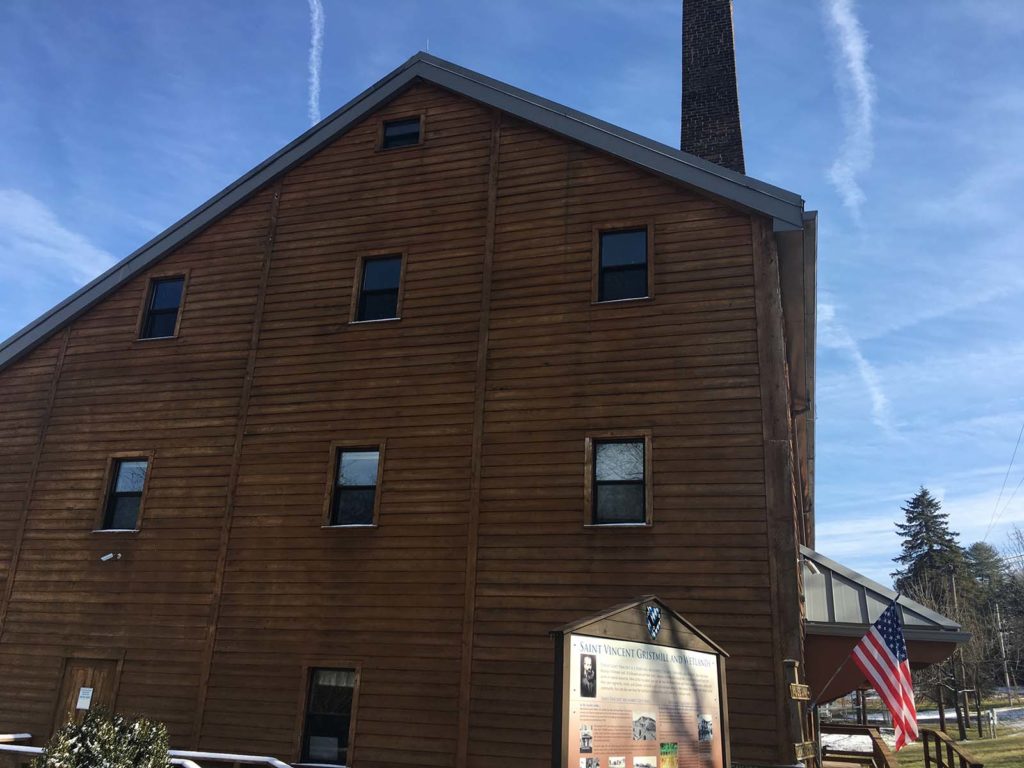
By Cynthia Caul, Program Manager at Center for Regional Agriculture, Food, and Transformation (CRAFT) at Chatham University | Image: Weatherbury Farms, a stop on the Baked culinary trail. Photo by Emeran Irby.
 Exploring PA in a Tasty Way
Exploring PA in a Tasty Way
This week we are excited to shine a spotlight on the Center for Regional Agriculture, Food, and Transformation (CRAFT) at Chatham University. The CRAFT team recently created four new culinary trails for the Pennsylvania Department of Community and Economic Development—trails that highlight the foodways traditions in southwestern Pennsylvania and throughout the Commonwealth. In the article below, guest writer and Program Manager for CRAFT, Cynthia Caul, shares the origins of this culinary trails program and offers a taste of the Baked trail.
Picked, Baked, Chopped, and Pickled—Four new PA culinary trails take a ‘food systems’ approach to regional tourism
The Pennsylvania Department of Community and Economic Development (DCED) dropped four new culinary trails last month—Picked, Baked, Chopped, and Pickled. Each trail highlights regional food traditions, farms, and businesses around one of four themes: apples, grains, charcuterie, and fermentation.
The trails were developed by a small team of us at Chatham University’s Center for Regional Agriculture, Food, and Transformation with culinary historian Mary Miller being the lead on the two-year project. It was a fruitful collaboration, bringing together Mary’s decades of experience in regional culinary tourism, CRAFT’s food system knowledge, and DCED’s state-wide tourism prestige and platform.
The goal from the outset was to promote tourism and economic development in communities throughout our state, and we believed we could most meaningfully do this by cultivating opportunities for authentic engagement with people, places…and, of course, food.
Why food? It might seem like a leap, or at least a choice, to some. But for us, it was neither, and not just because we work in the food space.
Food is relevant to all of us, regardless of our profession or passions. It is at the center of our daily lives. It is often a defining feature of our personal and collective identities, shaping the way we organize ourselves into communities and societies.
And, of course, we all require food to survive. It is an ultimate universal experience. We all eat.
So when thinking about how to encourage travel throughout our state in a lasting way that could sustain meaningful livelihoods and vibrant communities, food was a powerful fit.
In developing the trails, we used what we often referred to as a “food systems approach,” essentially meaning we wanted to ensure that the trails were inclusive of the entire food system. We wanted them to represent the diversity of past and present contributors to our food traditions, as well as individual growers, artisans, and makers across the value chain responsible for bringing food to our tables today.
What does this mean in practice? It was different for each trail.
In the case of the Baked trail, for example, we started by focusing on the diversity of grains that have been grown in this region both historically and today. This included corn, wheat, rye, barley, and buckwheat (a pseudo-grain).
Corn was the first grain of recorded use in our region, and the western-most segment of the Baked trail begins at Meadowcroft Rockshelter. This shelter used by hunters and gatherers dates back to 12,000 BC, and the exhibit includes a corn cob from 375 BC. Corn was central to the Monongahela and Lenape societies that were present during this period, as well as other indigenous groups that migrated to and through our region for millenia caring for and sustaining the land and rivers. The Lenape who are indigenous to the Delaware River Valley and eastern part of today’s Pennsylvania believed then and now that Mother Corn birthed modern agriculture and governs all its cultivation. Corn was the basis of most meals and was eaten off the cob and as porridge, cakes, and breads.
By the 1700s, however, these indigenous populations had been largely forcibly removed from these lands by European colonizers. These migrants came primarily from Britain, but other European countries as well. They brought with them their own food traditions and cultivation practices, and because of this, wheat production in this region almost entirely replaced that of corn. By the end of the century, Pennsylvania was widely known throughout the country as the “breadbasket of America,” and milling became the first major industry in the state. Hundreds of water-powered gristmills were constructed to mill this wheat into flour, and these spaces functioned as vibrant places of commerce and communion. Farmers came to these mills to grind their own wheat, purchase freshly milled wheat and animal feed, and spend time chatting with neighbors who often lived relatively far away on their own farms.
This period of economic expansion would not have been possible without the work and innovation of enslaved and indentured populations. This period saw a rapid increase and peak in Pennsylvania’s enslaved population with many enslaved individuals working on wheat and rye farms. Indentured servitude was also common on these farms, particularly among Irish and German migrants who labored temporarily in exchange for their transport to the country.
By the 20th century, most wheat production had moved to the more arable Mississippi Valley.
There are only a handful of gristmills left today, and an even smaller number that are still operational. The Baked trail takes travelers to a number of these historical institutions.

The Saint Vincent Archabbey Gristmill, part of the Baked trail, was built by the Benedictine monks and has been in continuous operation since 1854. It has endured for many years to serve as a symbol of Western Pennsylvania’s agricultural heritage and of the vision of Saint Vincent founder Boniface Wimmer.
In addition to corn and wheat, the Baked trail also walks travelers through the history of rye production and the Whiskey Rebellion, which was particularly significant in the more rocky and mountainous western part of the state that once produced one-third of the nation’s rye. Travelers learn about the region’s fastest growing cash crop and pseudo-grain buckwheat, as well as barley’s more recent renaissance ushered in by the state’s nearly 300 breweries and the nation’s first Black beer festival.
There are a wide array of delicious foods to be tasted along the trail, including pita, empanadas, half-rye, naan, pastries, whoopie pies (or gobs…), pizza, pretzels, and more. And this is just one of the trails. You can find all four full-length trails on the Visit PA website, as well as some highlights in the Pennsylvania 2021 Happy Traveler Guide available online and at every Turnpike stop and Tourism Bureau.
All of the trails highlight businesses sourcing local ingredients, so you’ll often have the chance to trace your baked goods or beer back to the soil in which the grain was grown or milled into flour.
These trails are intentionally rich and complex. They are in many ways the beginning of what we hope will be longer-term work in this space with the goal of providing people opportunities to meaningfully connect to their food, the land, and each other.
About CRAFT
The Center for Regional Agriculture, Food, and Transformation (CRAFT) works to support robust regional food systems that are equitable, inclusive, and sustainable in Western Pennsylvania and beyond.
CRAFT works with a number of regional partners to develop culinary trails that support economic development particularly in our region’s rural communities.
These trails aim to highlight the rich heritage and food traditions of the region, as well as include the history and culture of all of the region’s historical and current residents. We take this inclusive approach in order to acknowledge, learn, and inform about the fraught and complex history of land ownership and food production in our region and country, recognizing and celebrating the contributions of displaced indigenous and enslaved peoples.
The trails provide regional farms and food businesses with increased markets and promotional opportunities, as well as tourists with a deeper understanding of the regional food system and the unique value and history of the food grown and prepared within it.
Cynthia Caul is the program manager for CRAFT at Chatham University and graduate of the University of Pittsburgh’s Graduate School for Public and International Affairs, where she studied International Development. Cynthia’s research has focused on food and nutrition security, land access, and the role of agricultural smallholders in an increasingly globalizing economy. She also worked at the Ford Institute for Human Security, conducting research on human rights-based approaches to improving agricultural land access for women farmers and was the 2017 recipient of the Simon Reich Human Security Writing Award. Prior to her current role, Cynthia worked on public health programming in Ghana with the U.S. Peace Corps.
If you’d like to know more ways to explore the region, check out our driving itineraries for themed journeys through the Rivers of Steel National Heritage Area.

 Exploring PA in a Tasty Way
Exploring PA in a Tasty Way





